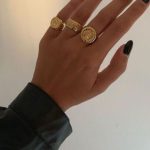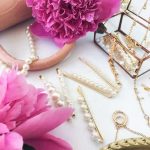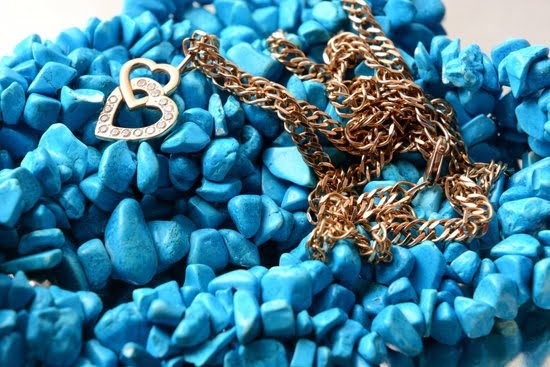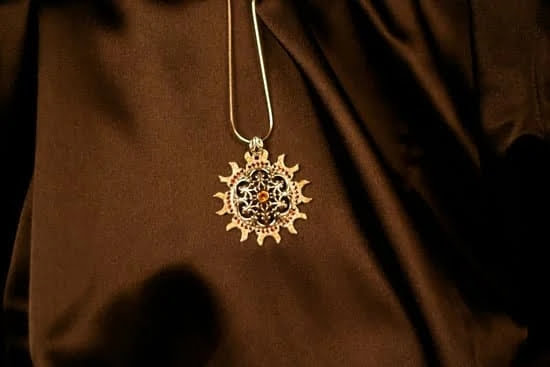For those looking to learn how to repair gold jewelry with a soldering iron, understanding the tools and techniques necessary is essential. Gold is a soft metal jewelers use for decoration because of its beauty, malleability, and ductility. It can easily dent or break when mishandled.
Jewelers are highly qualified professionals who know how to handle delicate items. However, if you’re determined to attempt gold jewelry repair yourself, you need to be aware of the tools and techniques necessary for completing the job safely and effectively.
Materials Needed
Whether it’s chain mending, re-tipping prongs or blocking in broken pieces of jewelry, there are several supplies necessary when it comes to repairing with a soldering iron. In addition to an electric soldering irons and basic safety precautions such as eye protection, these supplies include flux core solder wire, extra fine files and a bowl of water for cooling down heated items that have been soldered together.
Be sure you’re wearing fire retardant gloves to prevent serious burns from touching hot materials. Other non-essential but helpful supplies include pickle pot for cleaning jewelry prior repair as well as locking tweezers for handling small stones more precisely during repairs process.
Instructions For Repair
Once your safety equipment is prepared and your materials are at hand start by making sure that all surfaces to be joined-prongs, links or mounting plate etc.-fit snugly together without gaps; remove any excess material needed (small burrs) using the extra fine file if needed.
Apply heat directly onto surface with the tip of the soldering iron in order to bring parts up evenly; use medium temperature setting on your soldering iron as too hot could cause added problems like solder melt through or melting away too much material overall while too cold may not fuse metals properly resulting in weakened joints later down line.
Don’t rush though-lower temperatures require more time so precision counts here.
When both parts have fused apply flux core solder wire over edges. This should finish up basic mending job unless something needs re-sizing even more – in this case use locking tweezers to re-shape object before last cooling (in bowl of cold water). Tiny pieces will get cooled almost instantly so moves fast but remain very cautious at this point.
Necessary Tool and Safety Precautions for Jewelry Repair
When attempting to repair gold jewelry with a soldering iron, it is important to have the right tools for the job. This includes a soldering iron, flux brush, soldering sheets, and tweezers to pick up small pieces of solder. In addition, safety is paramount when conducting any kind of work involving fire.
Appropriate protective clothing must be worn such as long sleeved shirts and pants and safety glasses are essential. It is also important to make sure you have a fire extinguisher nearby in case anything catches ablaze.
To begin repairing gold jewelry with a soldering iron, the metal must be heated until it melts together into one solid piece again. To do this, use low heat settings on the soldering iron and apply your flux along the metal edges.
Next up applies your solder in thin strips between these two pieces – preferably along the backside so that it doesn’t show too much from the front view when you are finished. Make sure not to overheat the metal otherwise it could become brittle or even break apart completely during the process.
Once all of your pieces are melted together properly with your solder and cooled down completely, you can then move on to polishing or buffing out any remaining solder lines or gaps until smooth using sandpaper or a dremel tool set at low speeds – whatever works best for your particular project.
After doing this step by step several times if necessary, there should no longer be any bumps left visible from either side of the jewelry piece which will leave you with a perfect gold join.
Selecting the Right Soldering Iron for Jewelry Repair
Choosing the right soldering iron for jewelry repair is an essential step when it comes to repairing gold jewelry. There are several different types of irons available on the market, each with their own advantages and disadvantages. Electric soldering irons come in both low wattage and high wattages, with low wattage being recommended for small repairs such as those found in jewelry.
Butane-powered irons allow ultimate portability, but require additional fuel unless it’s a rechargeable model. Torch lighters are suitable for larger jobs that require more heat than a traditional soldering iron can provide. The choice will depend on the frequency of use and complexity of the job at hand.
Safety Gear
Before starting any project involving a soldering iron or solder, it’s important to make sure you have all the necessary safety gear – including eye protection and flame-resistant clothing – before moving forward. Never attempt to use a soldering iron without protecting your hands, eyes and skin from any potential burns or other injuries due to heated metal or molten solder.
In addition, make sure you’re using an appropriate air vent or fan to dissipate any toxic fumes caused by burning solder or heated metals.
The Process
Once you have everything you need for jewelry repair with a soldering iron, you’re ready to begin the process itself. Start by cleaning off the area on both pieces of gold where they will be joined together. Use sharp side cutters to trim away excess material when required before cleaning off again with acetone once complete if necessary; this creates the cleanest and most effective joint between metals.
To join pieces together, apply flux then place a small amount of solder onto each adjoining area before heating them together gently with your chosen form of confectionery until melted together smoothly. If needed you can use pickling solution after cooling down the join(s) to help optimize strength and durability. Finally, polish up the finished piece so no remainder is visible after completion.
Preparing the Jewelry for Soldering
Soldering gold jewelry can be a complicated process and requires careful preparation. Before attempting any soldering, it is important to select the correct tools for the job.
A high-quality soldering iron with a chisel tip will be necessary, as well as solder flux, which is a paste-like substance used to help adhere metal components together. By using the right type of tool and flux, you can ensure that your jewelry is correctly soldered without damage occurring to the metal itself or its surrounding components.
Cleaning Pre-Soldering
When preparing for soldering it’s essential to clean off dirt, grease and oils from the area where the solder will be applied. This can easily be done with a soft cloth or cotton swab soaked in alcohol or water depending on what surface you are working on. This step also gives you an opportunity to inspect the jewelry closely for any irregularities that may need attention before continuing with your solder work.
Soldering Techniques
Most jewelry projects require basic soldering techniques such as tacking and joining metals together via cold jointing or hot jointing. Once the parts have been cleaned and inspected they must be secured in place with tweezers or clamps in order to ensure stability during the soldering process.
It is then simply a matter of heating up the surface being joined until solder begins to flow freely into all areas of contact – this should only take just a few moments. After this stage you can use emery paper or steel wool to file down any unappealing chunks of solder left behind from previous joins until a smooth flat surface has been reached at which point you can consider your piece adequately repaired.
Selecting the Right Soldering Materials for Jewelry Repair
Whether you’re a prosessional jeweler or a DIY jewelry enthusiast, one thing that remains the same is that soldering tools are essential to repairing gold jewelry. Soldering involves melting a filler metal with a torch and connecting it to the surfaces of two metals being joined together. Additionally, flux helps clean the metals you’re working with and prevent or reduce oxidation, which can cause pieces to corrode over time.
Using the right materials for jewelry repair with a soldering iron is key. The solder and flux should be specifically designed for use in jewelry making. There are different types of solder available (hard, medium, and easy) that can range from 13K on upwards to 24K gold in purity, as well as silver alloys. Silver solder also becomes liquid at lower temperatures than gold, making it easier to work with than higher karat solders.
In order to select the appropriate flux for your repair job when using a soldering iron, first consider your task and what type of metals you’ll be fusing together, since some fluxes are only suitable for certain metals ( Typically soft metals such as copper or aluminum ). The next step is to check if the job requires an active or a passive flux.
Active fluxes contain chemicals like borax that increase temperature and Chemical reactivity on targeted areas while passive flux creates an environment which prevents oxidation from occurring during heat treatment.
Last but not least find out what type of soldering method you’ll be using; either pick , electric – current or gas torch heating , etc – This will clear up any possible risks related to fire hazards and thus help you make sure to select the right kind of material for your repair project.
Understanding the Basics of Gold Jewelry Soldering
Gold jewelry soldering can seem daunting at first, but with a little guidance and the right supplies, it’s relatively easy to master. Soldering is an essential skill if you want to create your own gold jewelry designs. Before getting into the specifics of soldering technique, it’s important to understand the basics and learn how to prepare jewelry for repair.
Safety should always be your top priority when you’re working with a soldering iron or other tools that use high temperatures. Wear safety glasses and gloves, and use a flame-resistant work surface for protection against potential fires or hot slag that may fly off from your jewelry during the process.
To begin preparing your jewelry for soldering, start by cleaning off any dirt or debris that could contaminate the gold pieces you intend to solder. Use a jeweler’s brush or special cloth to clean each piece thoroughly before continuing.
The kind of material you plan to solder is also important; different alloy combinations of metals require different methods for joining them together. For example, if technology re creating an open ring-style design out of gold tubing and wire pieces, then gas welding is probably best option; however if you only need two small pieces of gold joined together like in a pendant setting then solder works great.
No matter what type of material you are working with make sure its been cleaned thoroughly as this will help reduce oxidation which can interfere with adhesions. When you have everything properly prepped use flux paste on both pieces that need to be joined before warming up your soldering iron so its ready for use.
Once the flux paste has dried onto both pieces its time to lay down some solder on either side – make sure not spread too much. Too much solder can cause warping or melting of nearby materials during heat up – which is why its important to prep properly beforehand and not rush any part of the process.
Finally turn on your soldering iron and slowly move it around each piece until they are nicely welded together in place (but not melted so take breaks). Once finished let it cool off before applying more flux around all edges again – just like last time – this helps protect against further oxidation plus improve longevity overall.
Examples of Typical Jewelry Soldering Repairs
Soldering is a commonly used method to connect components of jewelry and other items that require permanent bonds. A soldering iron is an essential tool for many types of repairs, including jewelry. With the right supplies and some patience, anyone can repair gold or silver jewelry with a soldering iron.
The first step in repairing gold jewelry with a soldering iron is to gather all the necessary supplies. You will need a soldering iron, flux, flux brush, and either wire or sheet solder depending on your desired repair type. Ensure everything is clean by always wearing gloves when handling the tools and pieces of jewelry. It’s often helpful to separate any parts that don’t need to be rearranged during the repair process as well.
Next comes the actual soldering process itself. To begin, heat up the area with the soldering iron until it reaches 1,590 degrees Fahrenheit (870 degrees Celsius). Then brush off any debris from the surface with the flux brush and spread flux over the section you are about to work on.
Position your chosen material forsoldering onto another piece of metal for stability before heating up each end separately with your tip so they become malleable enough to twist together or form clasps using specific technique guidance online if necessary. Make sure you turn off your soldering iron once finished; otherwise you may risk burning yourself.
Finally, cool down reconnected pieces immediately by applying water over it before cleaning both surfaces again after cooling off to ensure there are no stray bits of flux or solder residue left behind which could cause corrosion down the line. Now put away all your tools in their respective places for safekeeping. With these simple steps, you should now have successfully repaired gold jewelry with a soldering iron using best safety practices.
Practicing Jewelry Soldering Technique
When it comes to repairing gold jewelry, soldering is a common and effective method for restoring pieces for everyday wear. Soldering enables professionals and novice jewelers alike to repair broken jewelry quickly with minimal risk of damaging the surrounding metal. Learning how to solder gold jewelry requires some practice, but once the basic technique is mastered, larger scale repairs can be done with relative ease.
The first step in learning to solder gold jewelry is gathering everything that is needed: from the equipment such as a soldering iron, flux paste, and supplies like pickling solution and flux brush for aftercare of the jewelry; to metal parts that are used for welding sections together, such as small rivets or jump rings. Once all of these items are collected, you can start with a basic exercise in soldering.
Start by attaching two right angles by placing the metal parts between them.
Make sure they fit snuggly before adding any solder since this will help prevent misalignments while joining them altogether later on. Apply flux paste gently along both corners of each part being joined and allow it to pool onto them before heating up the soldering iron tip with an appropriate wattage setting. Once heated enough, feed small amounts of solder into the gaps until they are fully joined.
Finally, once each piece has been joined according to its shape & size, they need to be treated with aftercare products like pickle solution that act as an antiseptic for metals and removes traces of remaining flux residue from each piece of jewelry. After 10-15 minutes in pickle solution per piece, rinse each under cold running water and use a brass brush gently over them to keep their shine intact for longer periods of time.
This procedure should be followed every time prior to using color polish products over newly repaired metals so as not stain them due oxidation process taking place when exposed without proper cleaning beforehand With these tips in mind you’re sure to become a master at soldering gold jewelry quickly and efficiently.
Tips for Successful Gold Jewelry Soldering
Soldering is a great way to repair jewelry that’s made from gold. If you’re new to soldering jewelry, it can be intimidating at first. However, if you follow the steps listed below, you’ll be well on your way to becoming an expert at repairing gold jewelry with a soldering iron.
First, it’s important to understand that when soldering gold jewelry, the aim is not always necessarily about having a flawless result. Instead of striving for perfection all the time, your goal should be more about making sturdy repairs that will last. This mindset will help make the process easier and less stressful.
When you are ready to start the actual soldering process, make sure you have all your tools gathered before you begin. You’ll need an adjustable temperature-controlled soldering iron and some borax flux paste or liquid flux. Keep these handy along with a pair of pliers so that they’re within reach while you work.
Before turning on the power source and heating up your soldering iron, it’s essential to thoroughly clean the area where repair work needs to be done using emery paper. This will make it easier for the solder to form a bond between the two parts being joined together.
Once everything is prepared (including practice runs if necessary. ), wearing protective eyewear is recommended as this helps protect your eyes from potential sparks and debris during soldering. With safety gear in place and supplied firmly mounted in position relative to each other, apply a small amount of flux onto each surface that needs repairing before pressing them together and then adding some hard-like solder into both pieces of jewelry.
Following these steps will ensure reliable joins because nothing else sticks too strongly when subjected to processing heat like molten solder does. Finally turn off the power source, but keep an eye on those joins until they cool down completely; this way any messes caused by drips or spills can easily be buffed away using emery paper again afterwards without leaving behind any unsightly blemishes or imperfections in what was once beautifulGold Jewelry.
Troubleshooting Common Problems With Gold Jewelry Soldering
This guide provides an overview of how to repair gold jewelry with a soldering iron. Before starting the process, it’s important to inspect the gold jewelry for any damage or weakened areas. Spread out your project on a soldering surface such as firebrick. Make sure you have protective eyewear in place and that adequate ventilation is available during the process.
It is also important to keep in mind that the jewelry may contain components other than gold so it is important to use the correct temperature settings when using your soldering iron. Heat up the tip of the iron according to manufacturer instructions, and clean off any old flux from both pieces before applying flux again.
Apply heat with intent and even pressure keeping in mind that too hot can cause damage, while too cold won’t create a strong joint. For most repairs, you will need to apply additional flux and retest at different temperatures until you get a steady flow of molten solder.
To ensure consistency when soldering, some jewelry makers find it helpful to practice and build familiarity with their tools prior to repairing their own jewellery by completing dummy runs on scrap metal or inexpensive materials first. Once you are comfortable using your own preferred method of soldering, move on to more difficult projects like repairing gemstone-set gold rings or clasps in intricate designs.
It’s crucial to ensure that solder flows evenly through all areas of the design without leaving unsightly globs or missed spots which could result in breaks over time due to weak joints.
It’s also important to pay attention to detail throughout your project and check each repair thoroughly at various magnifications (when necessary) ensuring seams are properly aligned and all wax is removed prior welding. When testing repairs done with soft metals such as gold, pliers should be used rather than hammers as this will prevent excessive stress being placed on weak welds increasing chances for success upon completion of repairs made with a soldering iron.
Final Steps
When you have finished soldering the jewelry back together, it is time to refine the repair. Using a jeweller’s file, carefully go over all of the newly-affixed pieces. This will help to bring everything into alignment and give a smooth finish that looks as if it was never broken in the first place.
Additionally, you may want to use a polishing cloth or buffing compound to further refine the connections and leave a smooth surface. Once done, your gold jewelry should look like new again.
An additional step that could be taken is etching or patterning. Depending on what kind of gold jewelry you are repairing, this can add a unique touch and make it look even more like its original state.
If the jewelry had stones set into it prior to the repair, then reattaching those stones may also be advised; this will require further soldering with care taken both around and inside of the stones so that they remain secure and in place after tightening.
As one final step, you ought to check for any remaining flaws or areas of weakness in your repair. Inspect closely for any gaps or cracks, paying particular attention to all solder joints where two parts come together, as these will be areas of weak points in the piece if not properly executed or inspected. Make sure that this inspection is thorough before declaring your gold jewelry fully restored.

Welcome to my jewelry blog! My name is Sarah and I am the owner of this blog.
I love making jewelry and sharing my creations with others.
So whether you’re someone who loves wearing jewelry yourself or simply enjoys learning about it, be sure to check out my blog for insightful posts on everything related to this exciting topic!





